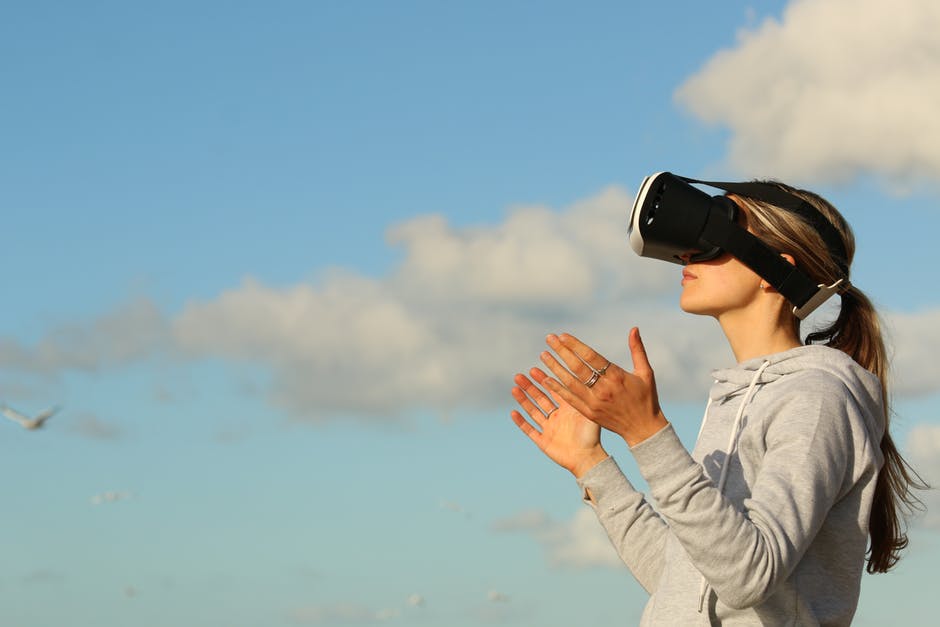The extraordinary capacity of immediately inducing users into telepresence is perhaps one of the greatest benefits brought by virtual reality (VR).
As discussed previously here at LiveInnovation.org, Telepresence refers to a mental projection that enables users to feel like there are elsewhere. The projection enabled by VR has already numerous benefits: From education to surgery; from online shopping to tourism experiences.
However in some cases in which experiences are involved, the overexposure to telepresence through VR can also possibly create negative consequences. Let’s take two examples:
1. Tourism Destinations: If users are capable of downloading or purchasing VR software of a tourism destination, such as Melbourne (Australia) and “visit” it constantly through would it reduce their desire to visit the destination as they might feel as if they already know it or would it actually increase their desire?
2. Music Concerts: If a band is on tour and fans are able to watch the artist perform the concert through VR day in and day out, would the fans be interested in seeing the same concert live when he artist is visiting their town?
In both examples consumers are motivated to consume a same core product: an experience. And when it comes to experiences, consumers tend to display frequently two characteristics:
- Vague expectations: It is unclear for them to know precisely what to expect. They might express a desire to “have fun”, to “have a great time”, but these are very broad descriptions and highly subjective.
- Complex satisfaction: After consumption of the experiences it can be very difficult for consumers to express the reasons why they were satisfied. In such cases, judgment is highly subjective and involve the evaluation of multi-sensorial stimuli.
Ps: If you are interested in knowing more on these two characteristics I would suggest you to read a classic Tourism marketing paper names “River Magic: Extraordinary Experience and the Extended Service Encounter”, by Arnould and Price (1993).
Considering that both characteristics are intrinsic of experiences, what happens when consumers can “pre-live” of an experience by the telepresence triggered by VR?
In order to answer this question one must comprehend the conflict between two extremes: novelty and familiarity.
- Novelty: In situations in which consumers have an hedonic motivation, such as tourism and music experiences, novelty situations (engagement with a new or unfamiliar situations or moments) are pivotal for a positive and long-lasting experience. In these situations, the element of “surprise” is crucial factor for satisfaction.
- e.g. This is one of the reasons why experiencing live sport games is so entertaining. The visitor does not know the outcome of the experience and novelty is highly desired.
- Familiarity: Familiarity is usually a positive factor in situations in which, for example, consumers have a high sense of risk (e.g. physical or financial) or have a utilitarian motivation (desire to simply task-solve). In such scenarios, consumers become risk aversive and seek familiarity.
- e.g. When applying for a driver’s license at a city hall or visiting a bank, users simply wish to problem-solve. Surprises or novelty aspects are certainly not desired as they might hinder performance of the task-solving activity.
So the challenge is that telepresence through virtual reality increases immensely the familiarity of users with contexts in which novelty is very important, such as tourism and music concerts.
If used in moderation, or to an optimal point, virtual reality is perhaps the most powerful tool during consumers’ decision making process. It is able to highly inspire an reduce the perception of multiple possible risks and boost consumer confidence.
But the main question is: What is the optimal point of virtual reality use on pre-purchase decision making? Especially if the technology is accessible for users and under their control?
Managers and marketers are already highly concerned about the prospects of VR decreasing consumption of real experiences. Personally I do believe this will be the case in certain scenarios, not exactly because the virtual experience might be exactly better. For example:
1. Tourism Experiences
- Destinations with potential physical risks: Destinations such as Rio de Janeiro (Brazil) or New Delhi (India), despite their extraordinary attractions also present challenges due to the social inequalities of the countries. For this reason, urban violence is a reality. Thus, tourists might opt to simply visit the main attractions virtually and not run potential physical risks.
- Destinations that are geographically distant: Although flying experience has become much more pleasant over the years, spending 1 or more hours on a plane is still a challenge for travelers. Thus, travelers might wish to avoid the physical effort.
- Destinations with single attractions: There are many destinations that are famous for having only one main attraction might also see a decrease in number of tourists. thus, investment in attraction development might become crucial.
- Senior travelers: Despite having great purchase power and time available to consumer tourism products and services, senior travelers are also highly sensitive. Due to age, a potential health fragility can hinder decision-making and induce the consumer to become more and more risk-aversive. In view of this, consumption of tourism experiences through VR might become an extremely frequent activity within this group, potentially reducing flow of visitors.
-
Tourists with disabilities: Accessibility is an extremely important aspect of tourism services. Often tourists have terrible experiences due poor preparation from destinations. VR will help tourists with disabilities to evaluate how prepared the destinations and service providers are for them and will make better decisions, which is a wonderful contribution of VR.
2. Music Experiences
- Highly crowded concerts: Recently there was much speculation involving attendance numbers at Lollapalooza in Chicago, USA. Nearly 400 thousand people attended the festival and, as in every large festival, there were a number of arrests and people taken to hospitals. Although the experiencing of an environment that does not resemble reality is one of the main motivating factors, a perception of physical risk can also be a factor to influence of consumers to prefer watching festivals through VR.
- Arena concerts: In 2017Adele has broken a number of records related to ticket selling. Due to her enormous fame and career achievements, touring in large arenas became a necessity. This also means that thousands of fans will be watch her concert from the very back of a large arena. Considering ticket prices and the perception of value for money, it is not difficult to imagine fans opting to watch through VR.
- Overexposure to the artist: It is inevitable the desire of fans to be exposed to stimuli related to their favorite artists. But assuming that soon bands will broadcast their shows live through VR to enlarge their revenue streams, it may impact live attendance due to overexposure. Despite being a fan, after watching the same concert of a tour a few times novelty elements are reduced and the desire to experience the live concert can be affected.
The Main Question Still Remains Open…
Once VR has fully been adopted in society and individuals have the power to independently “pre-consume” experiences virtually, how will we avoid it from not affecting attendance and consumption of real experiences?
One fact is clear: with continuous exponential technological development VR will only increase telepresence immersion. Consequently, familiarity will permanently be enhanced and novelty, reduced.
And there is no turning back. It will be up to each industry to learn and adapt. Just like in any evolutionary process.





